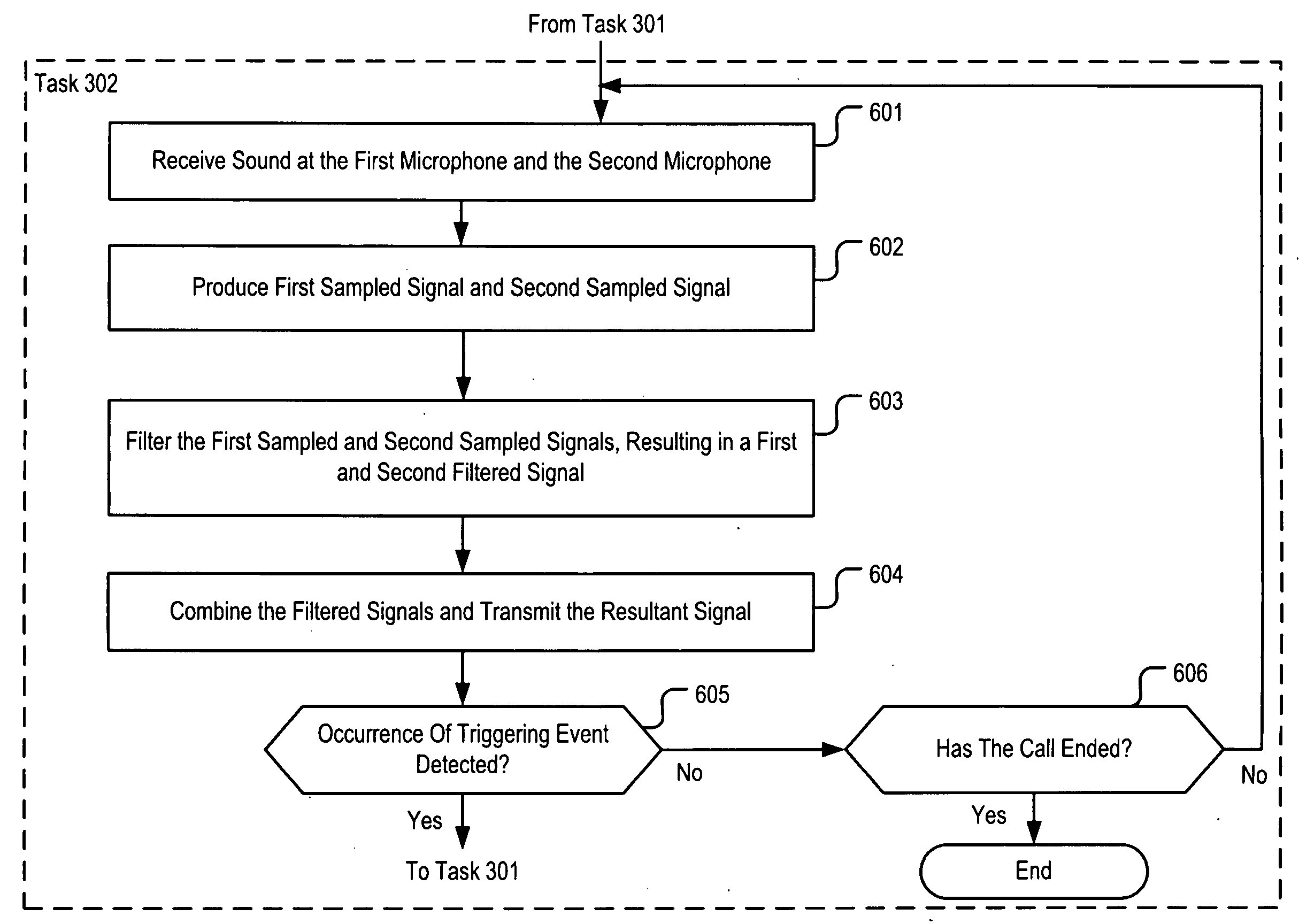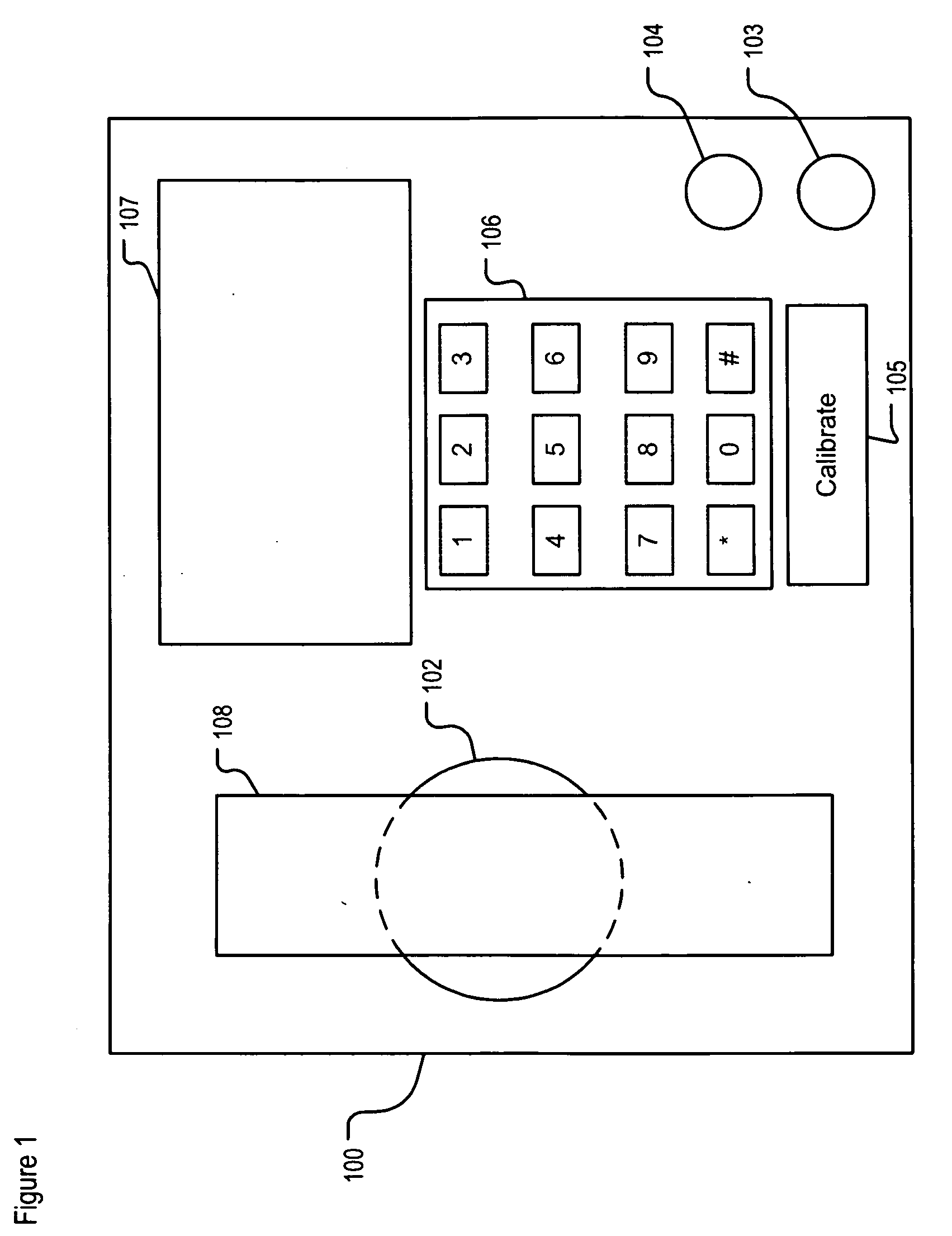Speakerphone Feedback Attenuation
- Summary
- Abstract
- Description
- Claims
- Application Information
AI Technical Summary
Benefits of technology
Problems solved by technology
Method used
Image
Examples
Embodiment Construction
[0022]FIG. 1 depicts a schematic diagram of the salient components of telecommunication terminal 100 in accordance with the illustrative embodiment. Terminal 100 comprises loudspeaker 102, microphones 103 and 104, calibrate button 105, dial pad 106, display 107, and handset 108.
[0023]Telecommunication terminal 100 is a desk-set telephone receiver capable of operating in speakerphone mode. However, it will be clear to those skilled in the art, after reading this specification, how to make and use alternative embodiments in which telecommunication terminal 100 is any type of communication-device, such as cell phone, two-way radio, and so forth. Although telecommunication terminal 100 uses only one speaker, it will be clear to those skilled in the art, after reading this specification, how to make and use alternative embodiments of the present invention in which a plurality of speakers is used. It will also be clear to those skilled in the art, after reading this specification, how to ...
PUM
 Login to View More
Login to View More Abstract
Description
Claims
Application Information
 Login to View More
Login to View More - R&D
- Intellectual Property
- Life Sciences
- Materials
- Tech Scout
- Unparalleled Data Quality
- Higher Quality Content
- 60% Fewer Hallucinations
Browse by: Latest US Patents, China's latest patents, Technical Efficacy Thesaurus, Application Domain, Technology Topic, Popular Technical Reports.
© 2025 PatSnap. All rights reserved.Legal|Privacy policy|Modern Slavery Act Transparency Statement|Sitemap|About US| Contact US: help@patsnap.com



